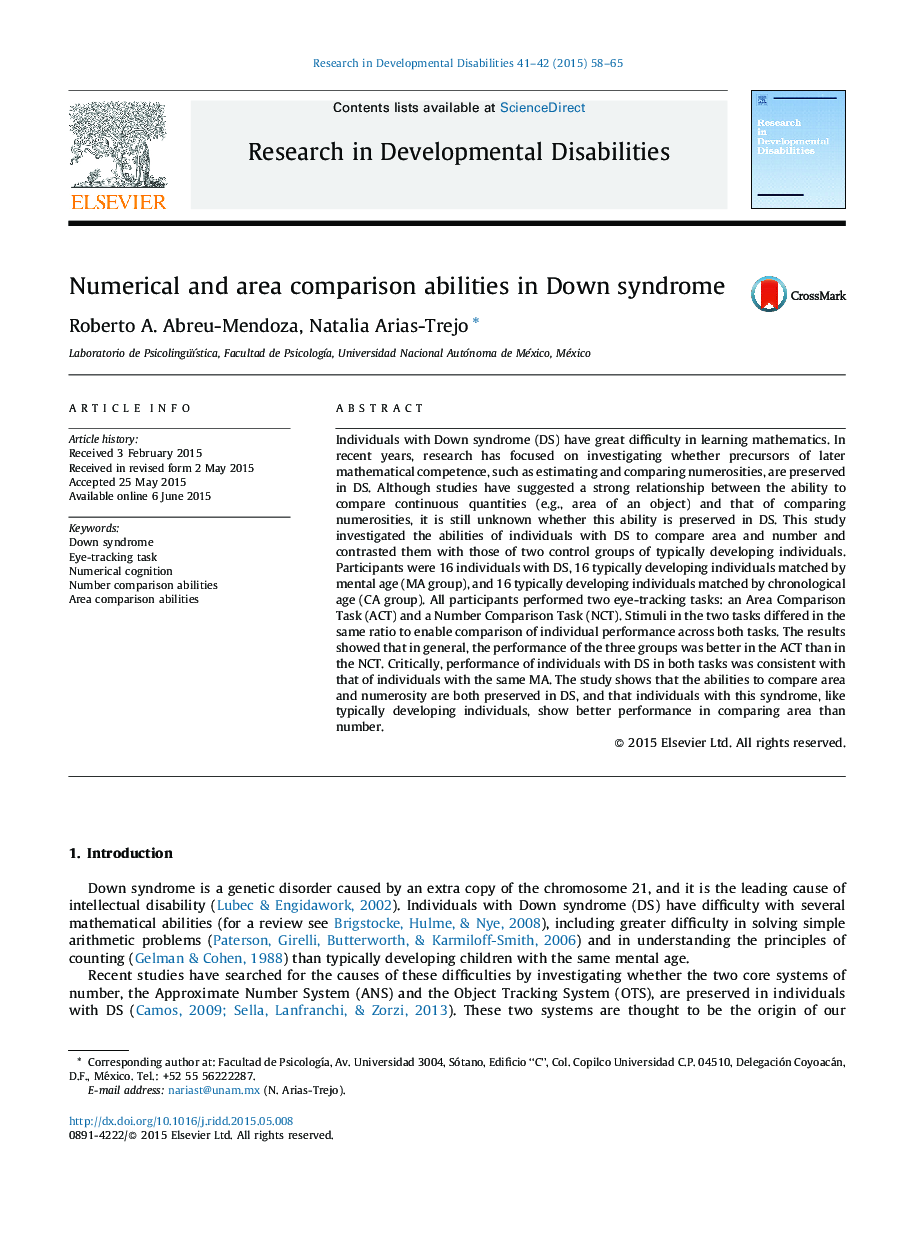| کد مقاله | کد نشریه | سال انتشار | مقاله انگلیسی | نسخه تمام متن |
|---|---|---|---|---|
| 371109 | 621897 | 2015 | 8 صفحه PDF | دانلود رایگان |
• Area and number comparison abilities of individuals with Down syndrome (DS).
• DS abilities compared with those of a mental age (MA) and a chronological age group.
• For each quantity, area and number, an eye-tracking task was employed.
• All groups showed a ratio effect and were better at comparing area than number.
• Critically, number and area comparison abilities in DS were as expected by their MA.
Individuals with Down syndrome (DS) have great difficulty in learning mathematics. In recent years, research has focused on investigating whether precursors of later mathematical competence, such as estimating and comparing numerosities, are preserved in DS. Although studies have suggested a strong relationship between the ability to compare continuous quantities (e.g., area of an object) and that of comparing numerosities, it is still unknown whether this ability is preserved in DS. This study investigated the abilities of individuals with DS to compare area and number and contrasted them with those of two control groups of typically developing individuals. Participants were 16 individuals with DS, 16 typically developing individuals matched by mental age (MA group), and 16 typically developing individuals matched by chronological age (CA group). All participants performed two eye-tracking tasks: an Area Comparison Task (ACT) and a Number Comparison Task (NCT). Stimuli in the two tasks differed in the same ratio to enable comparison of individual performance across both tasks. The results showed that in general, the performance of the three groups was better in the ACT than in the NCT. Critically, performance of individuals with DS in both tasks was consistent with that of individuals with the same MA. The study shows that the abilities to compare area and numerosity are both preserved in DS, and that individuals with this syndrome, like typically developing individuals, show better performance in comparing area than number.
Journal: Research in Developmental Disabilities - Volumes 41–42, June–July 2015, Pages 58–65
